Yoga: More Than Just Exercise
Yoga is the union of the body with the mind and the mind with the soul. It is often mistaken as just a form of exercise, but it encompasses more than just physical movements. In today’s fast-paced world, many people feel they do not have time for yoga. However, yoga goes beyond the mat and can be incorporated into our daily routines, including at work.
The healing powers of a physical yoga practice are well-known and, for those who practice it – undeniable. Asanas, or yoga poses, can help heal both physical and emotional ailments. While yoga is universally beneficial to both genders, there are specific poses that particularly benefit the female body and mind.
Morning Routine: Start Your Day with Yoga
A working woman’s day starts with busy mornings. From the time the alarm rings until we are back in bed, the day goes on in hustle and bustle. Some tweaks in our routine can give significant benefits, physically as well as emotionally.
Begin your day with gratitude to God and incorporate these exercises before getting out of bed:
- Supta Tadasana: While you are still on the bed, stretch your hands and legs as much as possible in opposite directions. Hold the pose for 20 counts. This first warm-up exercise gives a good stretch to all the muscles of the body.

- Pawanmuktasana: Bend your legs at the knee and roll both legs towards your chest. Hold both legs with your hands for at least 10 counts.
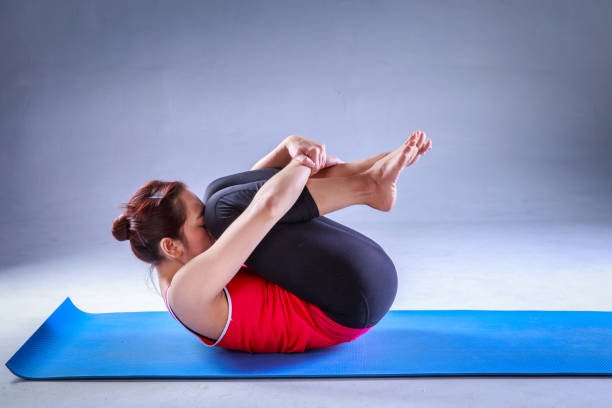
- Supta Matsyendrasana (L-R Spine Stretch): Release your hands from Pawanmuktasana, keep them at your shoulder level, and bend the folded legs to the left and right-hand side, with your face in the opposite direction. This asana gives a nice twist to the spine. Repeat it on the other side.

- Marjaryasana-Bitilasana (Cat-Cow Pose): Come to the table pose, on your four limbs. Breathe in as you stretch your spine outwards and exhale as you fold your spine inwards. Repeat this at least five times and gradually increase the count.

- Badha Konasana (Butterfly Pose): An exercise that is a must for all women of any age or medical condition. Sit in a namaste pose with your legs, both heels touching each other, and bring the heels as close to the pelvis as possible. With an erect spine, move your legs up and down, just like a butterfly’s wings. Repeat for 30 counts, gradually increasing the count to 100.
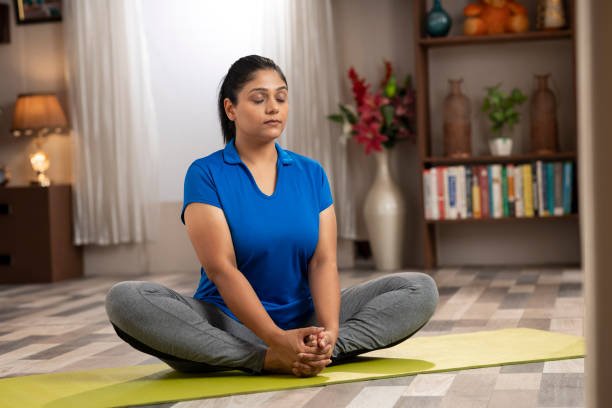
- Nadi Shodhana (Alternate Nostril Breathing): Sit in any comfortable pose, Vajrasana, Sukhasana, or Ardha Siddhasana. Place your left hand on your leg and with your right hand close your right nostril. Inhale through the left and exhale through the left. Then close the left nostril, and repeat it on the right nostril. Repeat it as many times as you can. Note: Always end this exercise with left exhalation.

- Malasana: Once done with the above asanas, drink a glass of warm water in the Malasana pose. This is a very good exercise for pelvic muscles and also soothes period pain.

Midday Routine: Refresh Your Body and Mind
As the day goes by, standing or sitting the whole time, eye, neck, and hand muscles get stressed. So, make sure to follow these simple exercises, if possible, every 2-3 hours of continuous work.
- Brahmamudra: Just blink your eyes several times to relax the eye muscles. With your head straight and spine aligned, move your eyeballs left-right, then down. Repeat the same with the neck. Rotate the shoulders as well as wrists, clockwise and anti-clockwise. You will feel a release of tension from these muscles. Note: Breathe in the centre and breathe out left/right/up/down. (As per the Vivekananda School Of Yoga)
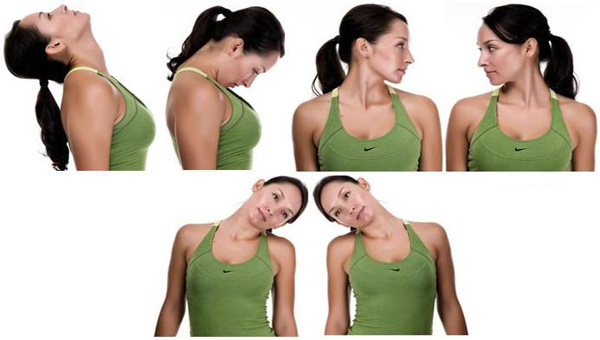
- Tadasana (Palm Tree Pose): Calf muscles are the second heart of our body. Caring for them is like caring for the heart. Standing for a long time can put substantial pressure on them. Calf raises or Tadasana strengthens these muscles. Stretch your hands straight up with fingers interlocked and raise your legs with your core locked, balancing on your toes. You can either repeat the up-down movement several times or hold the position. Gradually increase the count to 100.

- Chair Ustrasana (Modified Camel Pose): Hold the back of your chair firmly. Lift the body through the hip and bend backward. This stretch will release all the stress on the spine and relax it.
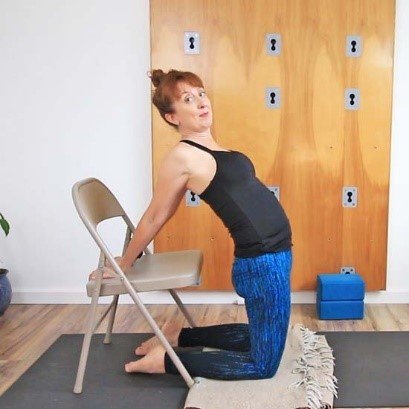
Evening Routine: Unwind Before Bed
Finally, you are back at home, but the work doesn’t stop. So, the exercises must also not stop. The following exercises you must do at the end of the day’s work but before bed. Journaling has been known to have tremendous effects on aligning thought processes. The first thing I will personally suggest is to jot down the tasks for the next day as well as write about your entire day. This simple exercise helps to get rid of all the negative thoughts, if any, that might disturb you while sleeping. After that:
- Leg Stretches: Sit in Dandasana state. With your spine erect and your toes pointing towards the ceiling, roll your toes outwards as well as inwards. Make sure to move only the toes, not the feet. Repeat 10 times. Follow with ankle rotations, feet in clockwise and anticlockwise, for at least 10 counts.
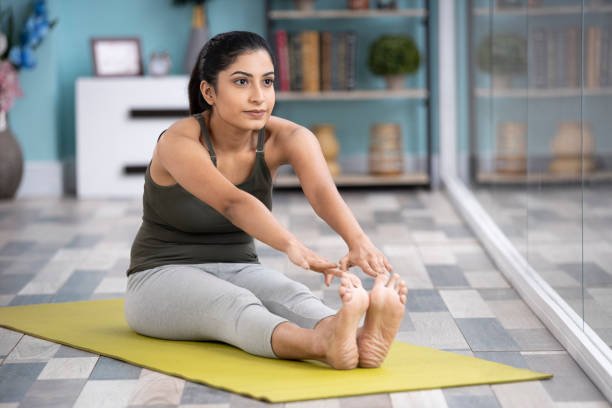
A day should always end with a breathing exercise. So, you can choose any one of the three breathing exercises or all three of them:
- Chandra Bhedana Pranayama (Left Nostril Breathing): As the name suggests, inhale and exhale only through the left nostril while closing the right nostril with your right hand.
- Diaphragmatic Breathing (Abdominal Breathing): Place your hands on your belly. Inhale deeply till you feel your stomach full of air. Exhale deeply.
- Pranayama: Close the right nostril and inhale through the left, but exhale through the right. Again, inhale through the right and exhale through the left. Repeat this as many times as you can. End this exercise with left exhalation.
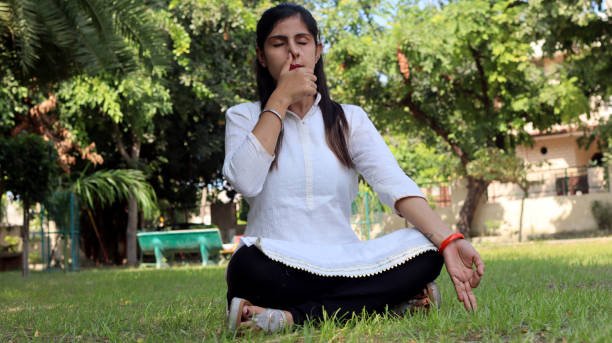
All the above-mentioned exercises calm down the breath and help to relax the body as well as the mind, a much-needed ingredient for a pain-free life.
By Amisha Shah











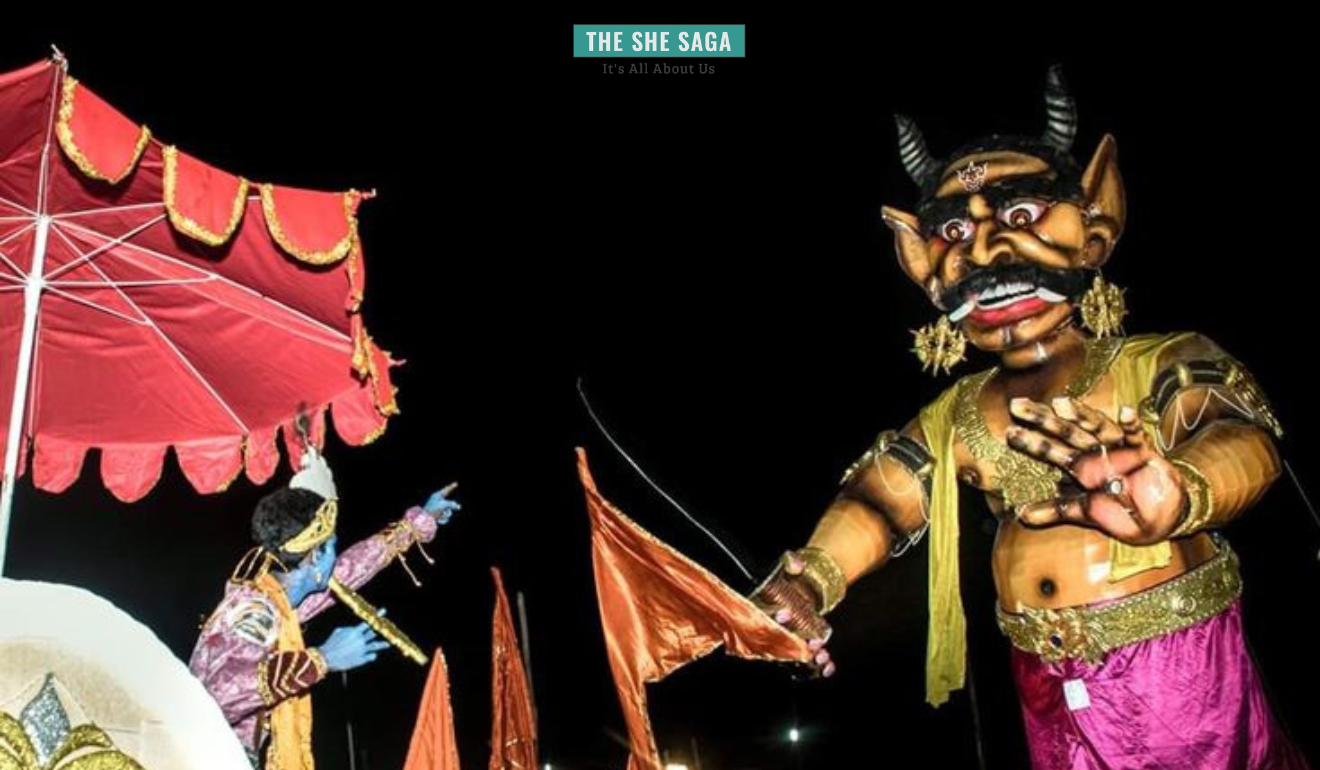




7 Responses
Very nice article on indepth yoga Practice.. morning , afternoon and evening routine.. thanks Amisha
Nicely written and presented with pics… extremely useful and simply yogasana explained in simple language.
Wow very informative
I do practice yoga everyday. It has helped me alot. I had some knowledge about it, but your writing has given more about it. Thank you
Very articulate and brilliantly penned. I’m sure this article will inspire others to follow Yoga.
Love that you have provided breakdown by time of the day, very informative and helpful!
Well described. Helpfull 👍